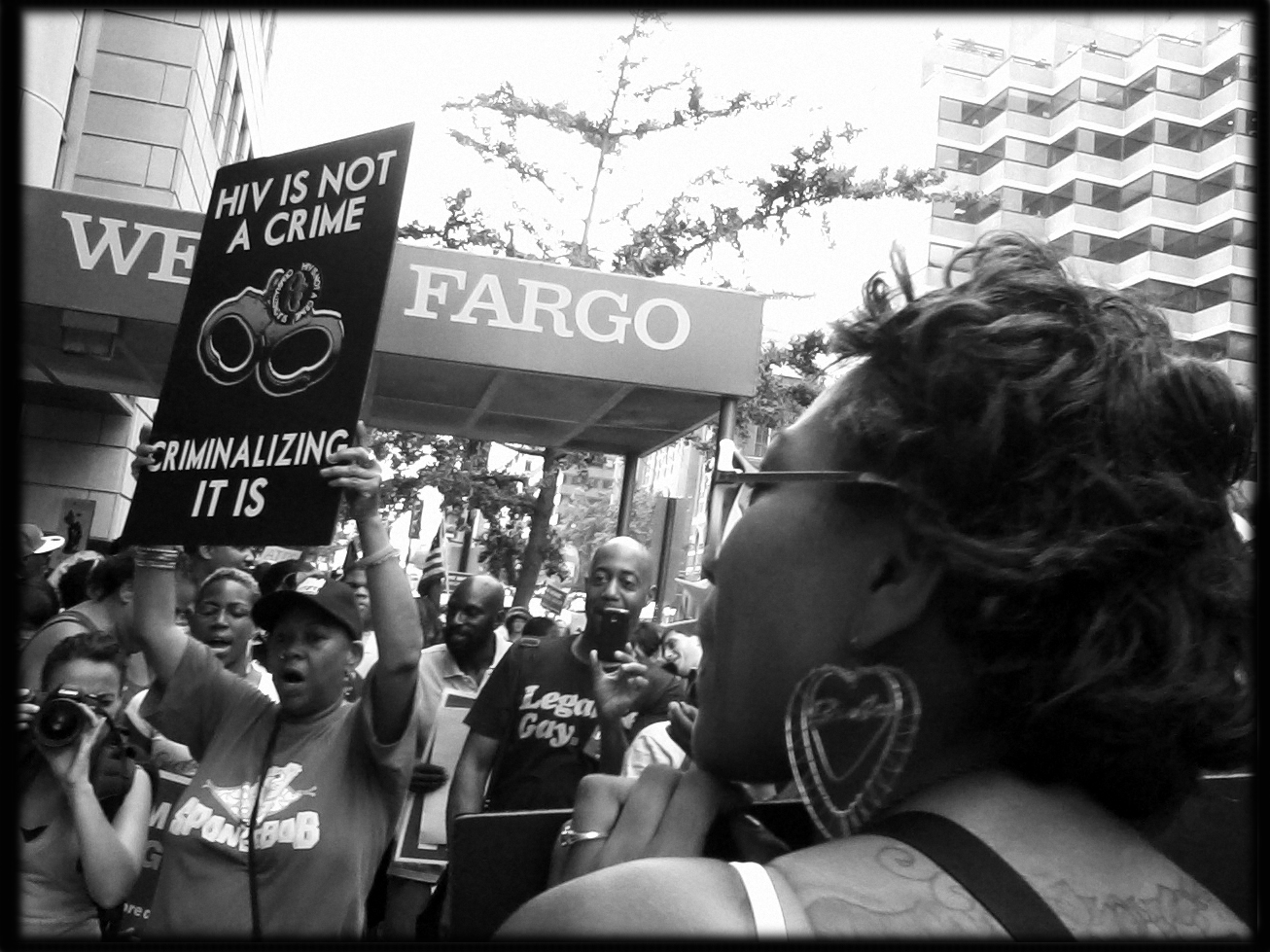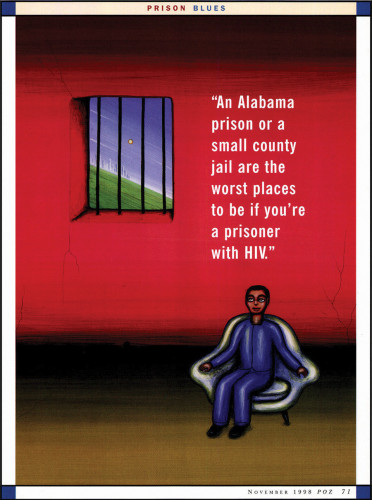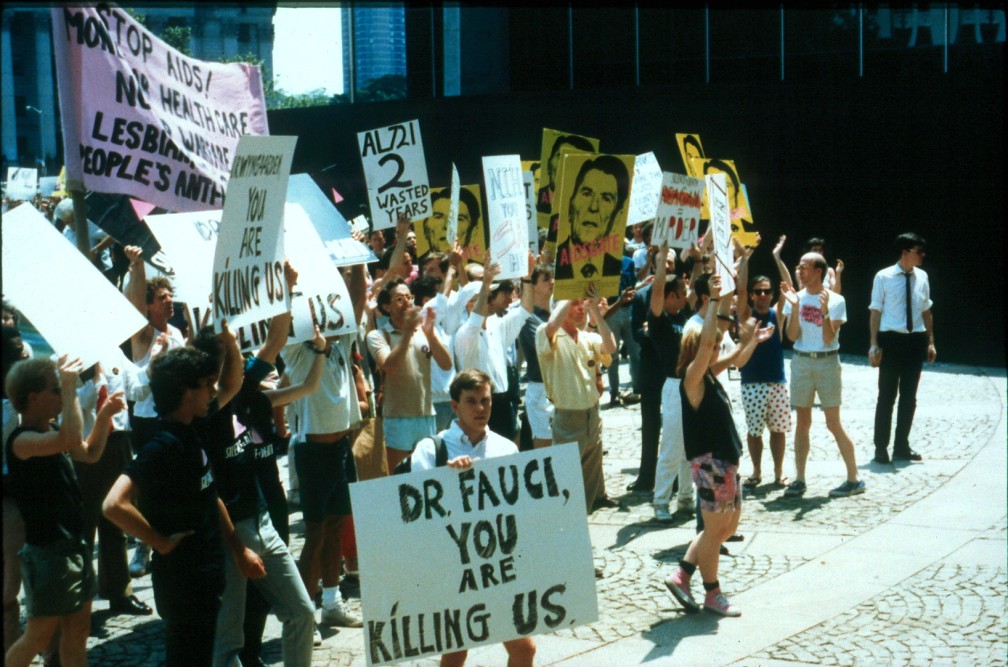Hearts on a Wire
Glitter
By Pascal Emmer, founding member of Hearts on a Wire
Hearts on a Wire Collective is a Philadelphia-based collective of trans and gender variant (“T/GV”) people building a movement for gender self-determination, racial and economic justice, and an end to the policing and imprisoning of our communities.
Since 2007, the collective has worked to break the isolation that prisons violently impose. When people would ask us about our group’s name, we’d say “A wire, as it appears on the top of prison fences, enforces a border. It keeps friends, lovers, family members, and communities apart. But, a wire can also be an important channel for communication. Our hearts abide in the ambiguity of the wire – as an instrument of separation and connection. Therefore, the intention of our work is to strengthen that fragile connection on the line.”
In that spirit, the first event we held was a party to make valentines for our T/GV friends in lock-up. They were so colorful and decorated, and, of course, covered in glitter! We sent out valentines to maybe thirty or forty people. But, no one received theirs. It was strange. Then, about six weeks later, a bulky manilla envelope arrived in Hearts on Wire’s mailbox. It was full of all the valentines we had mailed to folks. ALL OF THEM. To add insult to injury, across the front of the envelope, stamped in big bold red font, it said “THIS IS A PRISON, GLITTER IS NOT ALLOWED.” The Department of Corrections actually spent the time and public resources to manufacture this stamp! We couldn’t believe it, but then it made sense why literal and metaphorical glitter would seem so threatening to an institution built on destroying life.
We realized then that we had to get more savvy about moving below the radar of prison mailroom censors. Not just for sending letters. By the time we started rolling out our participatory action research survey asking T/GV folks incarcerated across the entire state of PA about their experiences of detention and their visions for decarceration and abolition, we had to come up with a stealth way to smuggle the survey in and out of prison facilities. That’s when Miss Terry, one of our inside collective members, had the brilliant idea of camouflaging the survey as a zine. We designed a cover and everything so that it looked like a zine that our friends in lock-up would often receive and share through the mail. It worked! The vast majority of surveys we sent out made it back to our mailbox, filled with the courageous and visionary writing of our inside membership.
What those surveys held were people’s dreams of liberation. One of those dreams was for transitional housing and reentry support so that imprisoned trans women of color could meet parole requirements and return home. People literally dreamed this into reality, and that dream was Morris Home (named in honor of Nizah Morris).
As we honor the life of Dominique “Rem’Mie” Fells, a beloved family member of Morris Home, may our hearts continue to strengthen that fragile connection on the line.
An embedded, scrolling pdf document of Hearts on a Wire newsletter, dated Winter 2020. The cover image features a black-and-white pen drawing of hearts and roses, and a table of contents. Document via Hearts on a Wire.
Lipstick
The following is an excerpt from a phone call with Adrian Lowe, current member of Hearts on a Wire.
There is a commissary list that has items that are available for purchase. Previously, if you were in a “male” prison, the items on the list are different than if you were in a “female” prison.
Women in “male” prisons wanted to order cosmetics, ladies deodorant, lipstick, mascara, and appropriate undergarments like bras and panties. But when they tried to purchase these items, they were denied by prison administrators.
We had identified that as an issue because through communicating with folks on the inside, we knew this was universally wanted and impacted lives; also, the rule was so ludicrous.
Our campaign was centered around the ludicrousness of it. People on the inside told us they wanted support. One Hearts on a Wire member thought up an action: everyone should request one item, lipstick, for instance… and make the prison articulate why it was contraband. (They have to tell you why.) “Because it makes us uncomfortable” is not on the list.
So the prison system was constantly having to say, “Lipstick is a weapon. Panties are a weapon.” Meanwhile, on the outside we had a signature campaign. We never delivered it; it was mostly something to pass around, to talk about how ridiculous this rule was. We talked about it every chance we got. We fed the story to reporters and encouraged media coverage of this as an issue, and of our campaign…
Reporters would call the prison and ask: “What is your justification?”
And we won! Or, at least we took it as a win. They just changed the rule. They didn’t tell us, they didn’t send us thank you cards, or update their website… Their policy just changed to: “Anyone can order anything they want as long as it isn’t a weapon.”
We heard from folks on the inside: “Hey, we got a new commissary list, I ordered a mascara, they didn’t say no.”
We got letters from inside, sealed with lipstick kisses.
HIV/AIDS Organizing in Prison
In the late 1980s, the HIV/AIDS epidemic was devastating US jails and prisons, and AIDS wards — which segregated HIV-positive people apart from everyone else — gained a reputation as becoming “the New Death Row.” A 1987 study by the Correctional Association of New York found that people with AIDS in prison were dying at twice the rate of non-prisoners with AIDS.

Five thousand people attended the “We Can End Aids” demonstration on July 24, 2012 in Washington, D.C. Image via scottmontreal/Flickr.
“Many prisoners with AIDS spend their last days in prison isolated and alone, far from their families and loved ones,” said Cathy Potler, former director of the Correctional Association’s AIDS Prison Project.
Jails and prisons were viral incubators that spread the disease to and concentrated it in overpoliced and criminalized communities. Inside/outside organizing models infused HIV/AIDS advocacy and education efforts in prison, and additionally connected revolutionary left modes of organizing with the daily grind of incarcerated life.
A 2014 exhibition in Brooklyn, NY, called attention to these exchanges. The curators, prison activists, noted of the archival materials displayed, “At least a year before the birth of ACT UP, men in a New York prison founded PEPA — Prisoners Education Project on AIDS.”
PEPA was co-founded by political prisoner David Gilbert after his close friend and fellow political prisoner, Kuwasi Balagoon, died from AIDS-related complications in 1987. PEPA was modeled after peer education paradigms that were being devised in queer communities outside prison at the time. This approach emphasized mental health counseling for and by imprisoned people living with HIV/AIDS, and education and harm reduction approaches to drug use and sex. Key to the project’s efficacy was the fact that it was run by people in prison living with HIV/AIDS, Gilbert maintained.

A drawing shows a person wearing a purple jumpsuit, sitting on a white chair in a red room that looks like a jail cell. Outside the window, which has bars on it, there is a blue sky and green grass. Words on the right corner of the image reads, “An Alabama prison or a small county jail are the worst places to be if you are a prisoner with HIV.” Image via Jane Fowler. POZ, Dec. 1998
“We lost many people, but we found a way to slow the spread of AIDS through inmate-to-inmate communication and education,” Gilbert wrote in a March 2020 letter, published by the New York Times in which he compared HIV/AIDS to the COVID-19 pandemic. “The policies we are living under will be most effective when we have a say in shaping them. Allowing prisoners an active role in creating a safer environment will protect lives both inside and out.”
Prison authorities punished the founders of PEPA. Even as their work saved lives during the 1980s and 1990s, Gilbert and PEPA’s co-organizers, Mujahid Farid and “Papo” Nieves, were transferred to different prisons across New York state, and harassed and criminalized for their public health contributions.

ACT UP demo outside National Institutes of Health (NIH) office, 1990. Image via NIH History Office/Flickr.
Nonetheless, PEPA was replicated across the country. A year after its founding, women in Bedford Hills, NY, initiated ACE (AIDS Counseling and Education). Similar projects emerged in other prisons over the next few years, with incarcerated people living with AIDS playing critical leadership roles. Inside/outside organizing around HIV/AIDS not only supported people in prison — it made visible the disproportionate prevalence of HIV/AIDS in Black communities long before it was recognized by the mainstream. It also connected and expanded communities of struggle that were able to complement each other’s fights for social justice, both inside and outside prison walls.